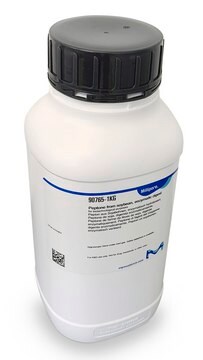1.07212
Peptone from soymeal
papain-digested, suitable for microbiology
Synonym(s):
Peptone from soymeal, Fermtech® base materials for biotechnology, Soya Peptone (papainic), Peptone from soymeal
About This Item
Recommended Products
biological source
soybean
Quality Level
assay
9.3-10.7% amino-nitrogen basis (purity)
form
medium granules
shelf life
limited shelf life, expiry date on the label
packaging
pkg of 25 kg
pkg of 5 kg
pkg of 500 g
color
light yellow
pH
5.5-7.0 (20 °C, 20 g/L in H2O)
solubility
2200 g/L
bulk density
420 kg/m3
application(s)
microbiology
storage temp.
15-25°C
General description
Application
Features and Benefits
- Safer - Significant reduction of inhalation of toxic and allergenic substances resulting in fewer allergic responses. Less contamination of working tools and environment
- Accurate - No separation of components and no clumping, even under humid or warm conditions, ensure a uniform product with higher performance accuracy
- Fast - Rapid and uniform dissolution in water
- Easier - Easier handling and weighing due to the better flow properties. Media do not stick to the flask or container
- Reliable - Homogenous distribution of ingredients guarantees high reproducibility even if only small amounts of media are used.
Linkage
Analysis Note
Identity: passes test
Total nitrogen (N) (Kjeldahl): 9.3 - 10.7 %
Amino nitrogen (as N): 1.8 - 3.2 %
pH-value (5 %; water): 6.5 - 7.5
Sulfated ash (800 °C): ≤ 15.0 %
Loss on Drying (105°C): ≤ 6.0 %
Suitability for microbiology: passes test
Legal Information
Storage Class
11 - Combustible Solids
wgk_germany
WGK 1
flash_point_f
Not applicable
flash_point_c
Not applicable
Certificates of Analysis (COA)
Search for Certificates of Analysis (COA) by entering the products Lot/Batch Number. Lot and Batch Numbers can be found on a product’s label following the words ‘Lot’ or ‘Batch’.
Already Own This Product?
Find documentation for the products that you have recently purchased in the Document Library.
Customers Also Viewed
Our team of scientists has experience in all areas of research including Life Science, Material Science, Chemical Synthesis, Chromatography, Analytical and many others.
Contact Technical Service












